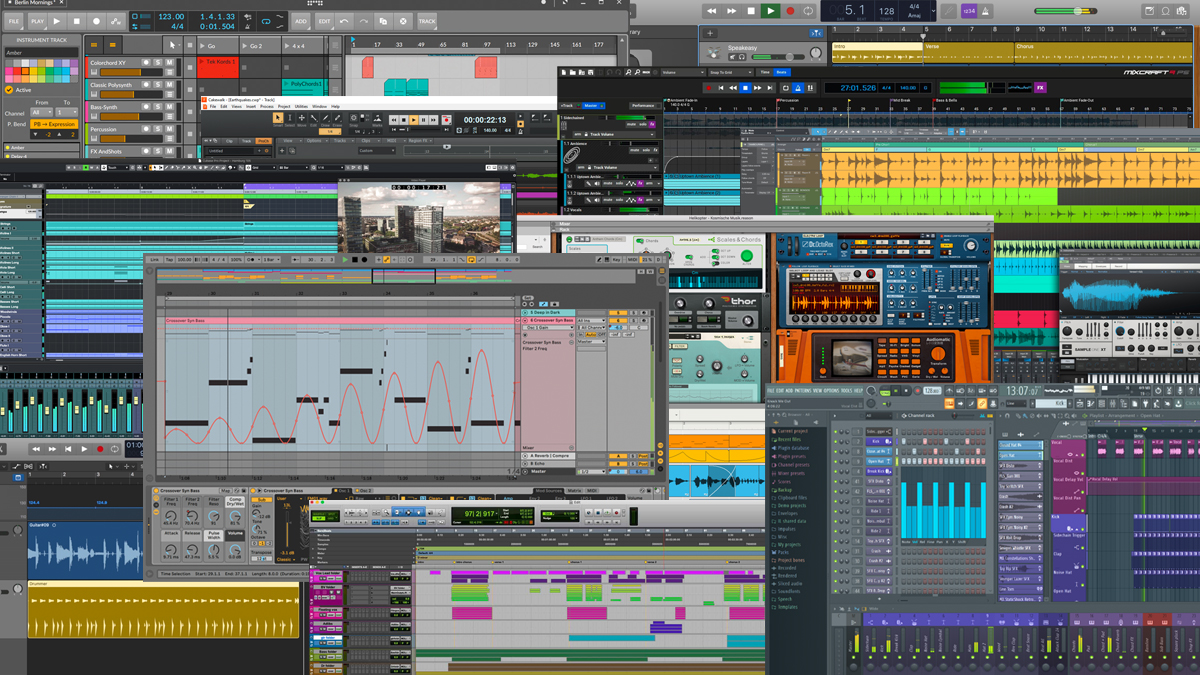
The best DAWs 2020: the best music production software for PC and Mac
by Ben RogersonThe best DAWs 2020: the best music production software for PC and Mac
If you make music on a computer, your DAW - or Digital Audio Workstation, to give it its full name - is the most important tool in your creative arsenal. Yes, you’ll likely have a MIDI keyboard, audio interface, set of studio monitor speakers and possibly a microphone or two in your home recording setup as well, but your music production software sits at the centre of everything.
As such, it’s important to get a DAW that you’re happy with - and, perhaps even more importantly, a DAW that enables you to turn your ideas into music as quickly and painlessly as possible.
To help you find it, we’ve put together a guide to what MusicRadar users have voted as the best DAWs on the market today. In truth, any one of these products will enable you to make music, but they’re all slightly different, so it’s worth taking the time to consider your options carefully.
What are the best DAWs?
As noted, the countdown below is based on your votes, but if you’re coming into the DAW world cold, we have a few recommendations of our own.
If you want the best DAW for beginners, it’s hard to look past Apple’s GarageBand, which is free - and a no-brainer - if you have a Mac. Acoustica’s Mixcraft is probably the closest PC equivalent, though you’ll have to pay for that one.
In terms of value for money, Cockos’s Reaper is hard to beat - this is a serious DAW at a stupidly low price - and Logic Pro offers significant bang for your buck, too (again, that’s Mac-only, though). Then there’s Image-Line’s FL Studio, which is notable for its impressive lifetime free updates. This could save you some serious money in the long term.
Finally, we have to mention Ableton Live, undoubtedly the DAW success story of the past two decades. Whether it’s the best DAW is open to debate, obviously, but it’s certainly made a massive impression, and is used by more artists than we’d care to mention.
Buying advice
As we’ve already noted, the best DAW for you is the one that you find it easiest to make music with, so it’s worth trying demos of all the software that you’re considering. Think carefully about how you’re going to work, and the elements of the DAW that are most important to you.
A DAW can be used throughout the music production process: for recording, editing, arranging, mixing and even mastering. If you can, try working through this process so that you can test the workflow. If you frequently find yourself struggling and are constantly consulting the manual, the software you’re using probably isn’t for you, and it could be time to look elsewhere.
It goes without saying that, before you buy, you should also make sure that your prospective DAW is compatible with your computer, any other hardware that you might have, and any plugins that you consider essential to your workflow.
The best DAWs
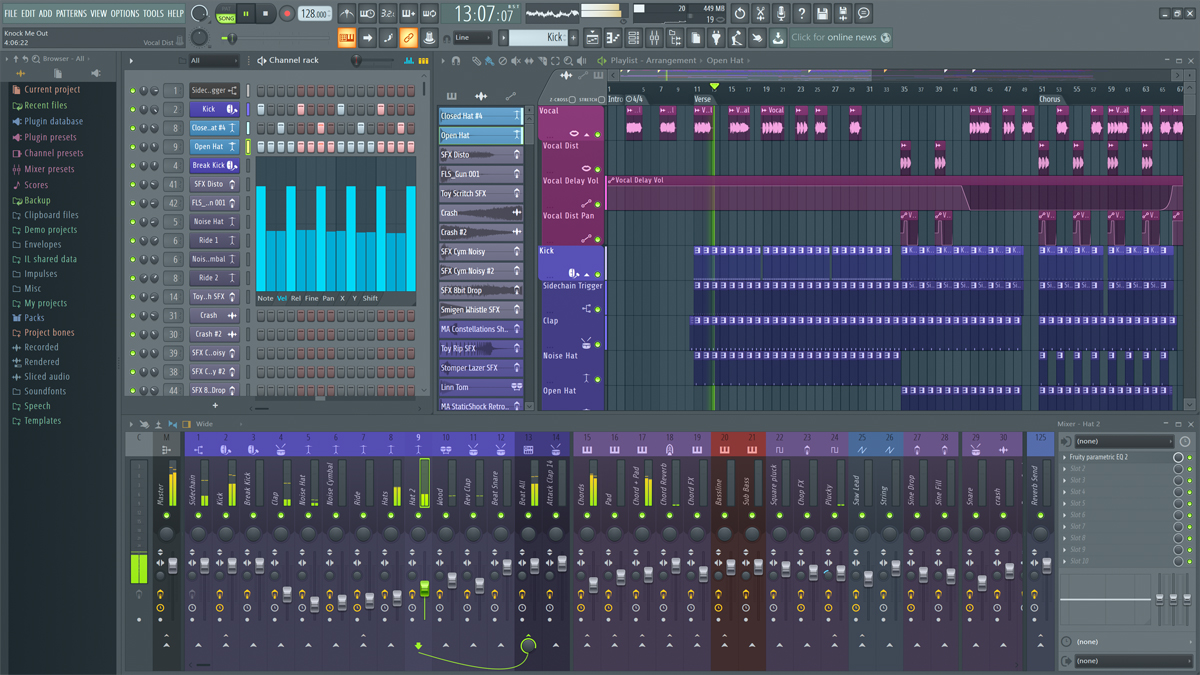
1. Image-Line FL Studio
MusicRadar users have voted this the best DAW
Launch price: From $99/£76/€99 | Versions: Fruity, Producer, Signature, All Plugins Bundle | Compatibility: PC/Mac | System requirements (PC): Windows 8.1, 10 or later, 4GB storage space, 4GB RAM | System requirements (Mac): macOS 10.13.6 or later, 4GB storage space, 4GB RAM
![]() Great for EDM producers
Great for EDM producers![]() Good value for money
Good value for money![]() Lifetime free updates
Lifetime free updates![]() GUI can feel a little cluttered
GUI can feel a little cluttered
Originally launched as FruityLoops, Image-Line's DAW holds near-iconic status for a certain generation of producers, particularly in the hip-hop and EDM realms.The headline feature in version 20 was a native 64-bit Mac version, meaning that FL Studio can now be used on macOS (as well as PC) without the need for a clunky workaround. Pleasingly, licenses are shared between both Mac and PC versions.
Image-Line offers lifetime free upgrades to FL Studio users, meaning that all existing users of the software now automatically own upgrades to version 20 on both platforms. And the updates just keep on coming: version 20.5 brought in Flex, a new preset-based soft synth, while 20.6 has added a variety of new features.
There will always be those who claim that FL Studio isn’t as ‘serious’ as some other DAWs, but the facts suggest otherwise, and it has some notable fans in the pro community, too. The thousands of votes it received in our poll suggests that this really is ‘the people’s DAW’, a title FL Studio shows no signs of relinquishing any time soon.
Read review: FL Studio 20
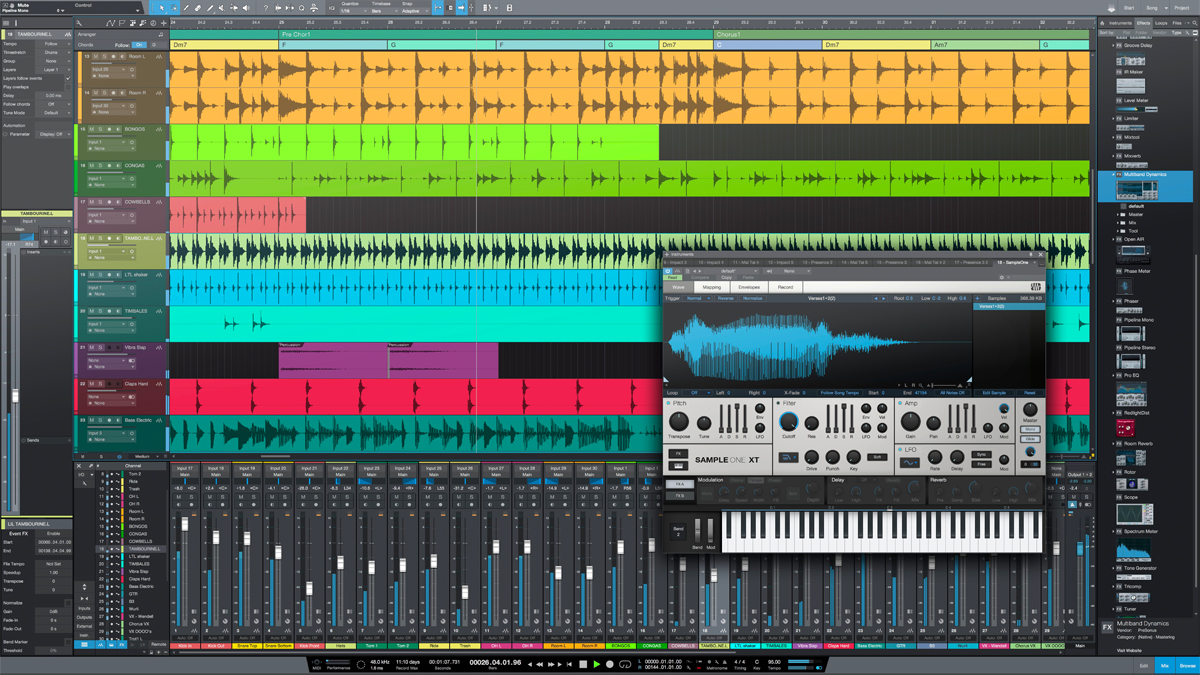
2. PreSonus Studio One
An 'upstart' DAW that's now playing in the big league
Launch price: From £100/£85/€95 | Versions: Prime (free), Artist, Professional | Compatibility: PC/Mac | System requirements (PC): Windows 7 (SP1 + platform update), Windows 8.1 or Windows 10 x64, Intel Core Duo or AMD Athlon X2 processor (Intel Core 2 Duo or AMD Athlon X4 or better recommended), 4GB RAM (8GB or more recommended), 40GB storage space | System requirements (Mac): macOS 10.11 or higher (64-bit only), Intel Core 2 Duo processor (Core i3 or better recommended), 4GB RAM (8GB or more recommended), 40GB storage space
![]() And excellent all rounder
And excellent all rounder![]() Productive workflow
Productive workflow![]() Harmonic Editing is useful and the Drum Editor is a joy to use
Harmonic Editing is useful and the Drum Editor is a joy to use![]() One-window interface can feel hectic
One-window interface can feel hectic
Studio One has been gaining ground for several years, and it's now a DAW of real power and maturity, not merely matching its rivals in most respects but going beyond them in a few areas.
Version 4 added “Harmonic Editing” of monophonic and polyphonic audio and MIDI tracks, enabling a song or individual elements within it to be automatically shifted to a user-defined key and chord progression. New MIDI editors for drums and patterns were included, too, along with a good assortment of workflow enhancements. Version 4.5, meanwhile, includes more than 70 new features, many of which have been implemented in response to user requests.
Studio One has long been a DAW with the potential to genuinely change your musical life, and version 4 only reinforces that position. If you’ve still yet to try it, there has never been a better time.
Read review: PreSonus Studio One 4
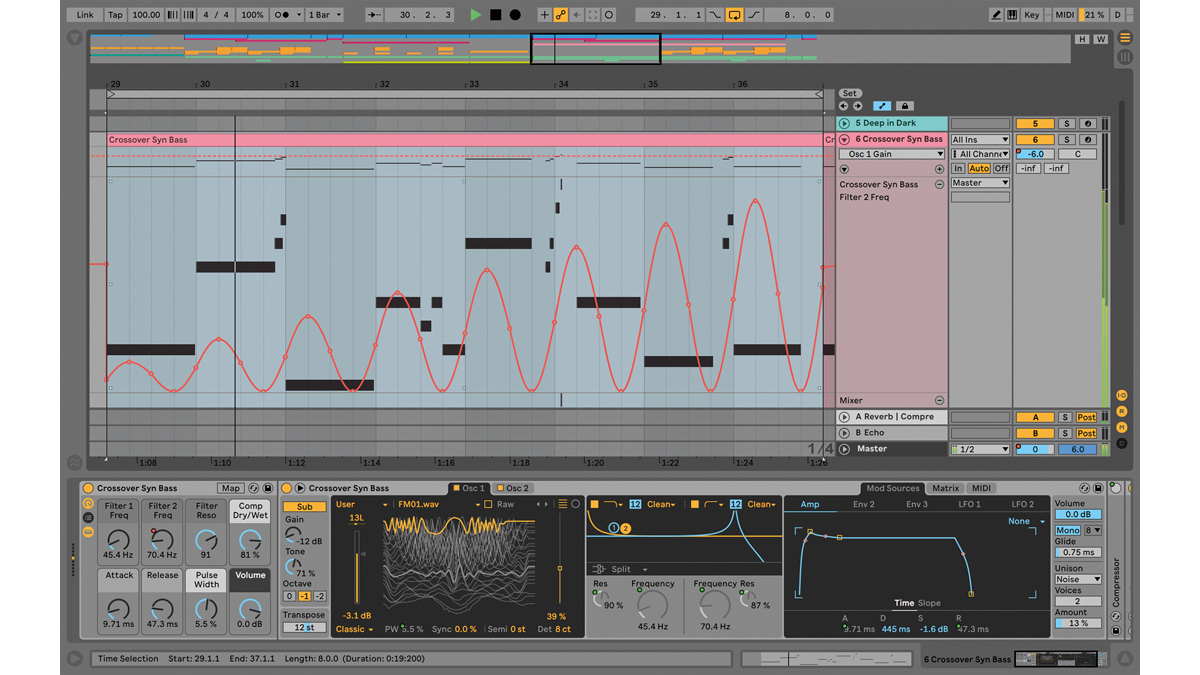
3. Ableton Live
An inspiring DAW with a next-level workflow
Launch price: From $99/£69/€79 | Versions: Intro, Standard, Suite | Compatibility: PC/Mac | System requirements (PC): Windows 7, Windows 8 or Windows 10, 64-bit Intel (Intel® Core i5 processor or faster recommended) or AMD multi-core processor, 4GB RAM (8GB or more recommended) | System requirements (Mac): OS X 10.11.6 or later, Intel Core 2 Duo processor (Intel Core i5 processor or faster recommended), 4GB RAM (8GB or more recommended)
![]() Fast and creative workflow
Fast and creative workflow![]() Excellent built-in devices
Excellent built-in devices![]() The choice of countless pros
The choice of countless pros
It's hard to overstate the impact that Live has had on the music software marketplace. When the first version was released in 2001 it threw out the traditional design rulebook and established itself not just as a recording program for composers, but also as a performance instrument in itself. Since then, it's exploded in popularity and influenced the development of countless other desktop and mobile apps.
The eagerly-awaited Live 10 was a deceptively extensive update, making plenty of meaningful changes, most of them to the Arrangement View. There were some new plugins too, of course: the Wavetable synth and Echo, Drum Buss and Pedal effects.
Live 10.1 represented another well-judged update, adding some significant new features and - notably - the long-awaited support for VST3 plugins.
Of course, users will inevitably have a long wishlist for Live 11, but for many, Ableton’s software already sets a standard that no other DAW can match.
Read review: Ableton Live 10
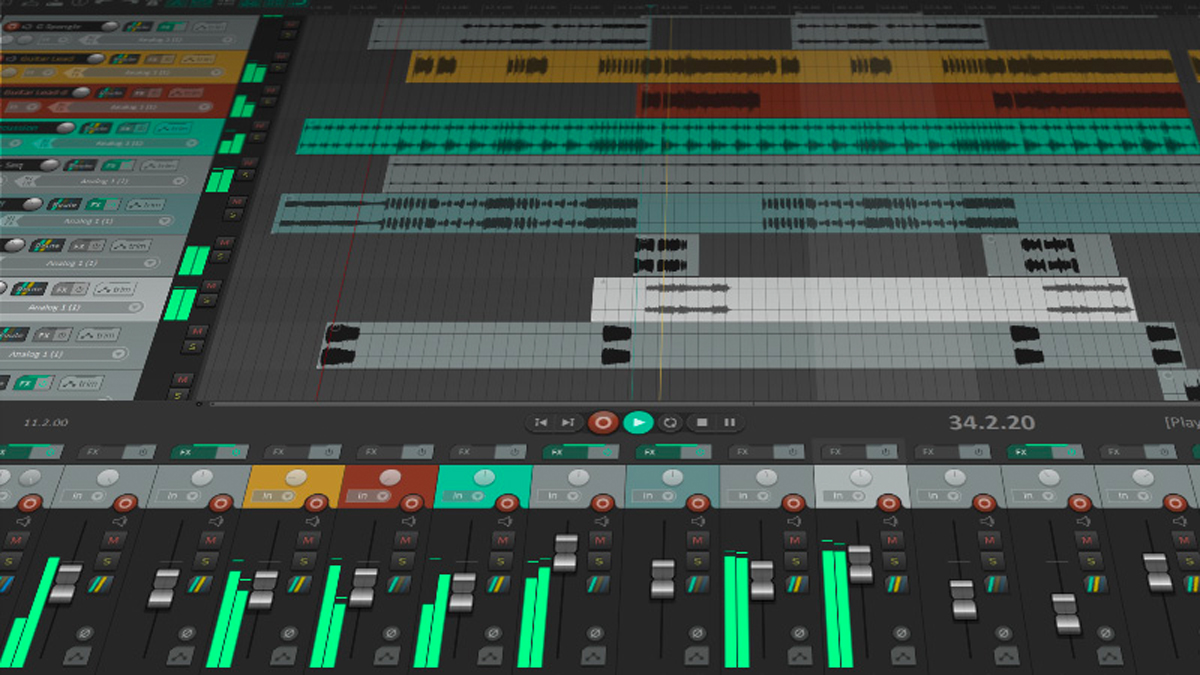
4. Cockos Reaper 6
A seriously powerful DAW at a bargain price
Launch price: From $60 | Versions: Standard | Compatibility: PC/Mac/Linux (experimental) | System requirements (PC): 32-bit: Windows XP/Vista/7/8/10, 12MB storage space; 64-bit: Windows XP/Vista/7/8/10 x64, 13MB storage space | System requirements (Mac): 32-bit: OS X 10.5-10.13, 18MB storage space; 64-bit: OS X 10.5-10.14, 20MB storage space (dedicated OS X 10.15 Catalina version also available)
![]() Amazing value for money
Amazing value for money![]() Sophisticated MIDI/audio routing capabilities
Sophisticated MIDI/audio routing capabilities![]() Tiny storage footprint
Tiny storage footprint![]() Doesn't come with loads of plugins
Doesn't come with loads of plugins
For the benefit of those not in the know, Reaper is a remarkably affordable cross-platform DAW that has a tiny footprint and sophisticated MIDI/audio routing capabilities. What’s more, the demo is fully-functional, though if you want to keep using it after 30 days, you’re required to pay the license fee.
This is one of the most customisable and affordable DAWs around. What's more, it's wonderfully responsive, with everything from scrolling and zooming to fader moves and item editing feeling quick and fluid. The recently-released Reaper 6 continues the good work of previous versions, offering subtle refinements that you’ll appreciate on a daily basis.
Factor in some budget for the soundware of your choice and Reaper makes for a top-class music production environment.
Find out more: Cockos Reaper 6
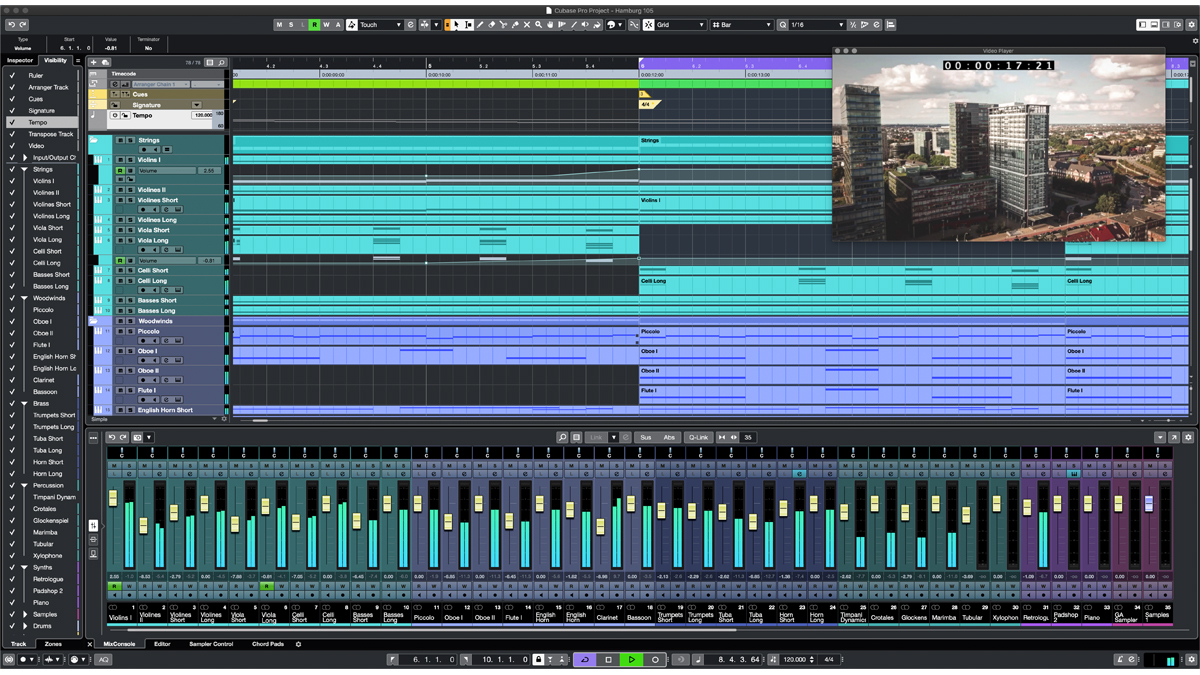
5. Steinberg Cubase
A grand old DAW that can still keep pace with the bright young things
Launch price: From $100/£85/€89 | Versions: Elements, Artist, Pro | Compatibility: PC/Mac | System requirements (PC): 64-bit: Windows 10, Intel Core i series or AMD Ryzen multi-core CPU, 4GB RAM (8GB recommended), 30GB storage space | System requirements (Mac): macOS Mojave, macOS Catalina, Intel Core i series or AMD Ryzen multi-core CPU, 4GB RAM (8GB recommended), 30GB storage space
![]() A great history and lots of development
A great history and lots of development![]() Refined workflow
Refined workflow![]() Lots of bundled content
Lots of bundled content![]() 'Traditional' design
'Traditional' design
On the market since the days of the Atari ST (ask your Dad), Cubase has been around for the advent of audio recording, plugin effects and instruments (Steinberg actually invented the VST standard) and every other major DAW development.
With such a long history, you’d think Cubase would have every feature under the sun, and indeed, there are few it lacks. With an emphasis on improvements rather than a rack full of shiny new toys, Cubase Pro 10 provided a faster workflow and a more enjoyable user experience, while the 10.5 update picked up where that left off, refining things further and adding a new plugin or two.
We admit to missing the days when each new edition of Cubase brought with it a massive pile of flashy new toys, but 30 years is an eternity in the fast-paced world of music technology, and we have to say that Cubase has aged very well indeed.
Read review: Steinberg Cubase Pro 10
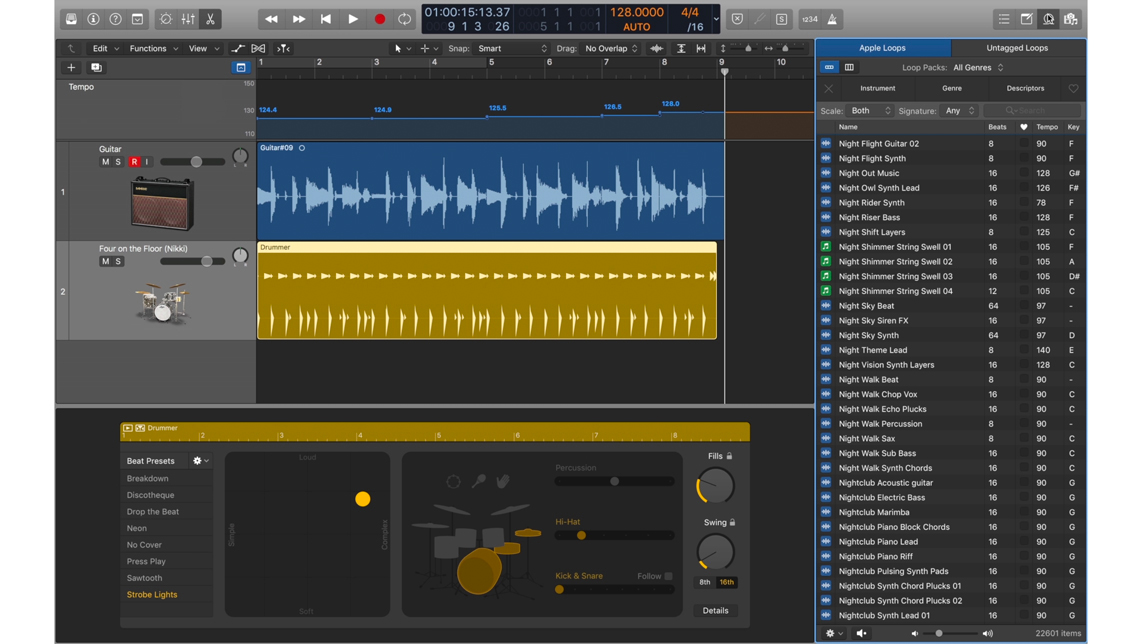
6. Apple Logic Pro
Amazing value and great performance on the Mac
Launch price: $200/£200/€230 | Versions: Standard | System requirements (Mac): macOS 10.13.6 or later, 64-bit processor
![]() Great value
Great value![]() Tried and tested workflow
Tried and tested workflow![]() Comes with loads of content
Comes with loads of content![]() Mac only
Mac only
It’s been a while since we had a ‘full’ new version of Logic Pro - version X was released way back in 2013 - so you could argue that it’s in need of a bit of a refresh. Apple has certainly been pretty generous with its free point release updates, though: versions 10.1 and 10.2 were both significant revisions, and the same could be said of version 10.3, particularly if you own a Touch Bar-equipped MacBook Pro.
2018's version 10.4 update was also significant, adding a new 'smart' tempo detection technology and additional plugin effects, while version 10.4.2 added the option to move Logic's sizeable content library to an external drive. version 10.4.5, meanwhile, lets you work with larger projects than ever before.
More than all that, though, Logic Pro remains superb value for money: for the price, Mac users won’t find a more comprehensive set of music production tools anywhere else.
Read review: Apple Logic Pro X 10.4
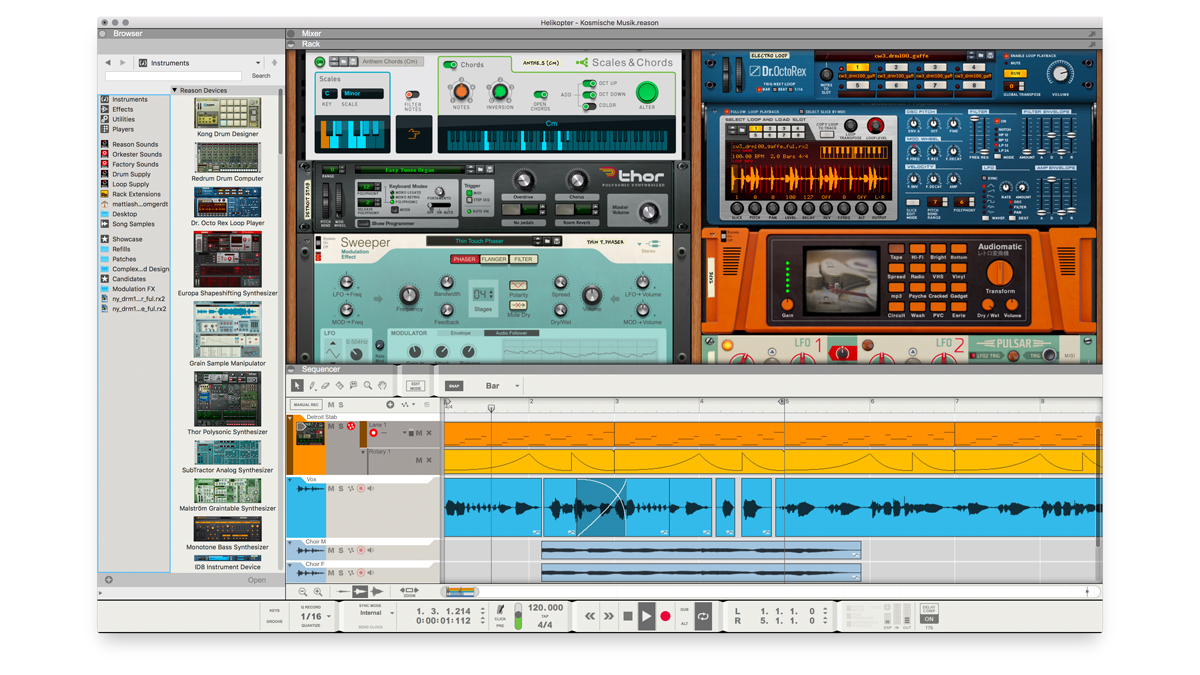
7. Reason Studios Reason
The rack-based DAW can now be used as a plugin
Launch price: From $99/£69/€79 | Versions: Intro, Standard, Suite | Compatibility: PC/Mac | System requirements (PC): Windows 7 or later (64-bit), Intel or AMD multi-core processor, 4GB RAM (8GB or more recommended for large ReFills or Rack Extensions), 4 GB free system disk space required, plus 8 GB for optional content. Additionally, program may use up to 20 GB scratch disk space | System requirements (Mac): Mac OS X 10.11 or later (64-bit), Intel Mac with multi-core processor, 4GB RAM (8GB or more recommended for large ReFills or Rack Extensions), 4 GB free system disk space required, plus 8 GB for optional content. Additionally, program may use up to 20 GB scratch disk space
![]() Unique rack-based workflow
Unique rack-based workflow![]() Great SSL-modelled mixer
Great SSL-modelled mixer![]() You can use its devices as a plugin
You can use its devices as a plugin![]() Hardware-esque design won't be for everybody
Hardware-esque design won't be for everybody
2019 was a big year for Reason. Its developer, Propellerhead Software, became Reason Studios, and version 11 of the rack-based DAW was released. This introduced the Reason Rack Plugin, which enables the DAW’s core tools to be used as a VST 3 or AU plugin within another DAW.
A second smart addition to Reason 11 is the ability to use elements of the DAW’s SSL-modelled mixer as individual devices. Having them available alongside Rack instruments is a great touch, and works particularly well in the Reason Rack Plugin.
Of course, you can still use Reason as your main DAW, but with the stock instruments and effects now available to use anywhere you like, this is the most attractive that the software has looked in years.
Read review: Reason Studios Reason 11
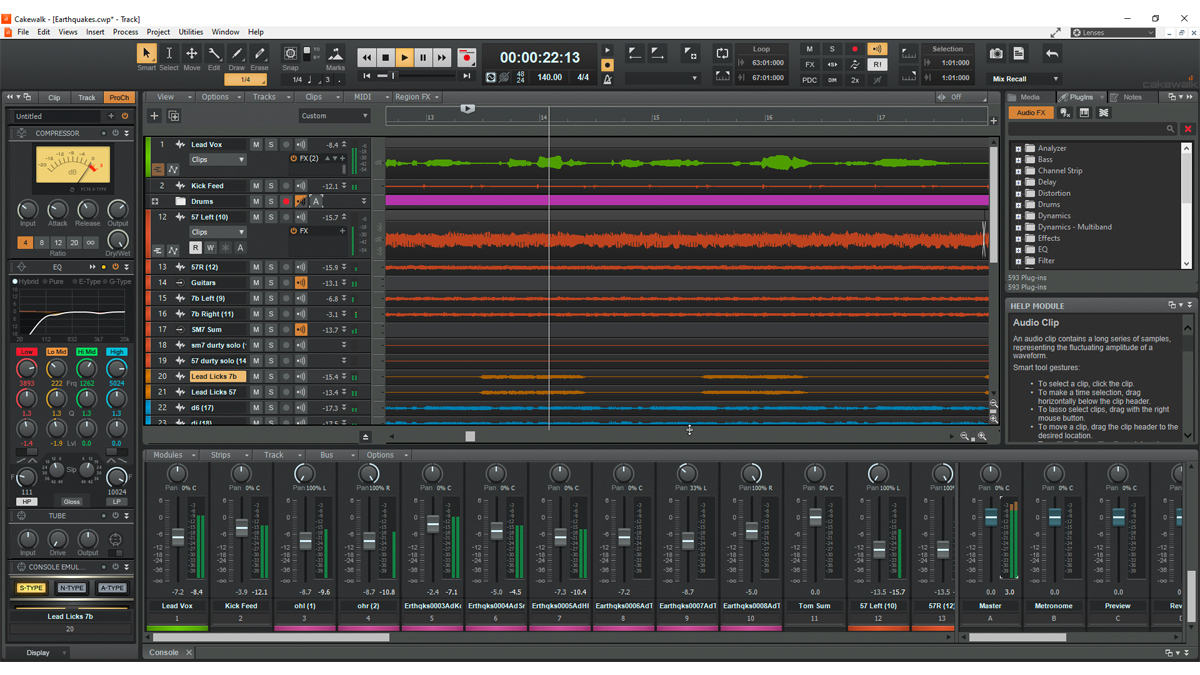
8. Cakewalk by BandLab
Sonar rides again, and for free
Launch price: Free | Versions: Standard | Compatibility: PC | System requirements: Windows 7 or higher (64-bit only), Multi-core Intel or AMD CPU, 4GB RAM, 3GB disk space
![]() A full DAW for nothing
A full DAW for nothing![]() Customisable Skylight interface
Customisable Skylight interface![]() Flexible ProChannel modules
Flexible ProChannel modules![]() No Mac version
No Mac version
Back in 2018, online DAW vendor BandLab announced that it was acquiring the Cakewalk IP, which was then in the hands of Gibson, and that the Sonar DAW would live on as Cakewalk by BandLab
Better still, it's now made the software available for free. The third-party content that was bundled with the paid-for version has been removed, but the DAW's key features, such as the Skylight user interface, flexible ProChannel modules and 64-bit mix engine, are all here.
So, if you're a PC user on the lookout for a new DAW, you've got literally nothing to lose by trying this one.
Find out more: Cakewalk by BandLab
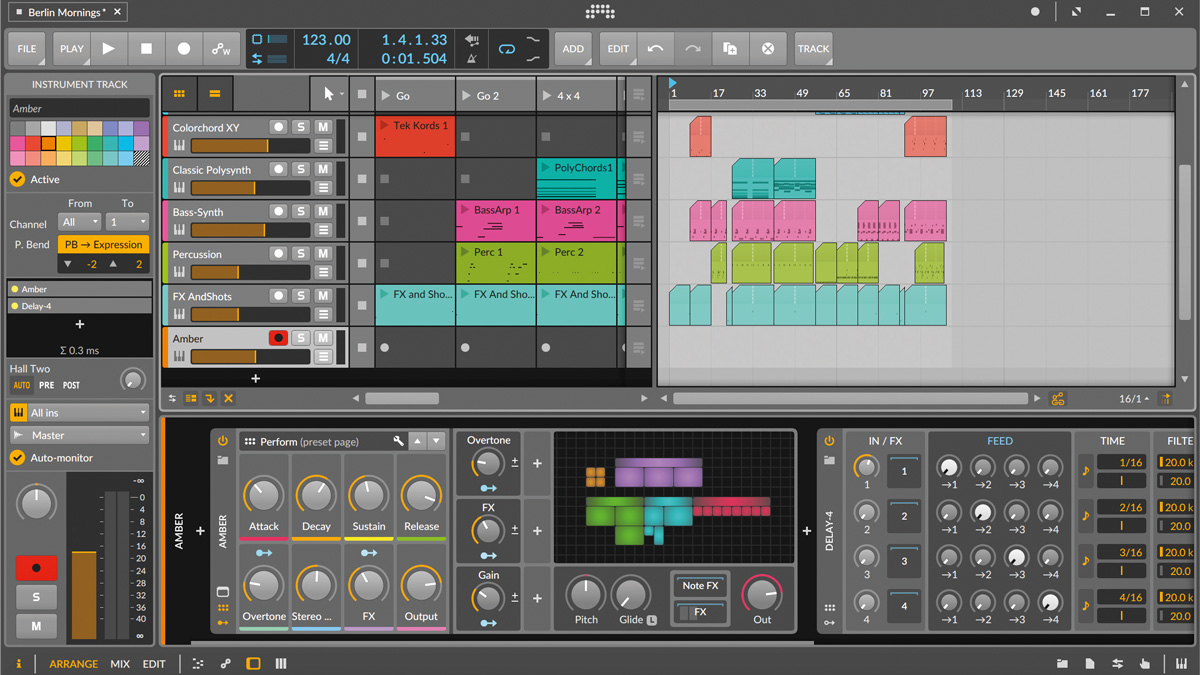
9. Bitwig Studio
A great option for the creative producer
Launch price: From $99/€99 | Versions: 16-track, Standard | Compatibility: PC/Mac/Linux | System requirements (PC): Windows 7 or later (64-bit), Dual-core AMD or Intel CPU or faster with SSE3 support, Minimum 12GB free disk space (for full content installation) | System requirements (Mac): Mac OS X 10.11 or later, 64-bit Intel CPU, Minimum 12GB free disk space (for full content installation) | System requirements (Linux): Ubuntu 17.04 or later, 64-bit dual-core or better x86 CPU with SSE3 support, Minimum 12GB free disk space (for full content installation)
![]() Flexible modulation system
Flexible modulation system![]() Built-in modular environment
Built-in modular environment![]() Genuinely forward-thinking feature set
Genuinely forward-thinking feature set![]() Ableton Live still casts a shadow...
Ableton Live still casts a shadow...
It’s a little over five years since version 1 of Bitwig Studio first hit hard drives, which makes it a relative infant in DAW terms. The application has come a long way in that time, though, throwing off the shackles of its inevitable Ableton Live comparisons - the two share a number of original developers and some significant workflow similarities - by adding multiple features that have bolstered Bitwig’s reputation as possibly the most inventive DAW on the market.
Now we have version 3 - an update very much focussed around just a single new feature, albeit a significant one. We’re referring to The Grid, a new type of device that brings a fully modular environment to Bitwig Studio’s toolkit. This, along with some nifty pitch enhancements in version 3.1, further cements Bitwig Studio’s existing stake as the creative producer’s DAW of choice.
Read review: Bitwig Studio 3
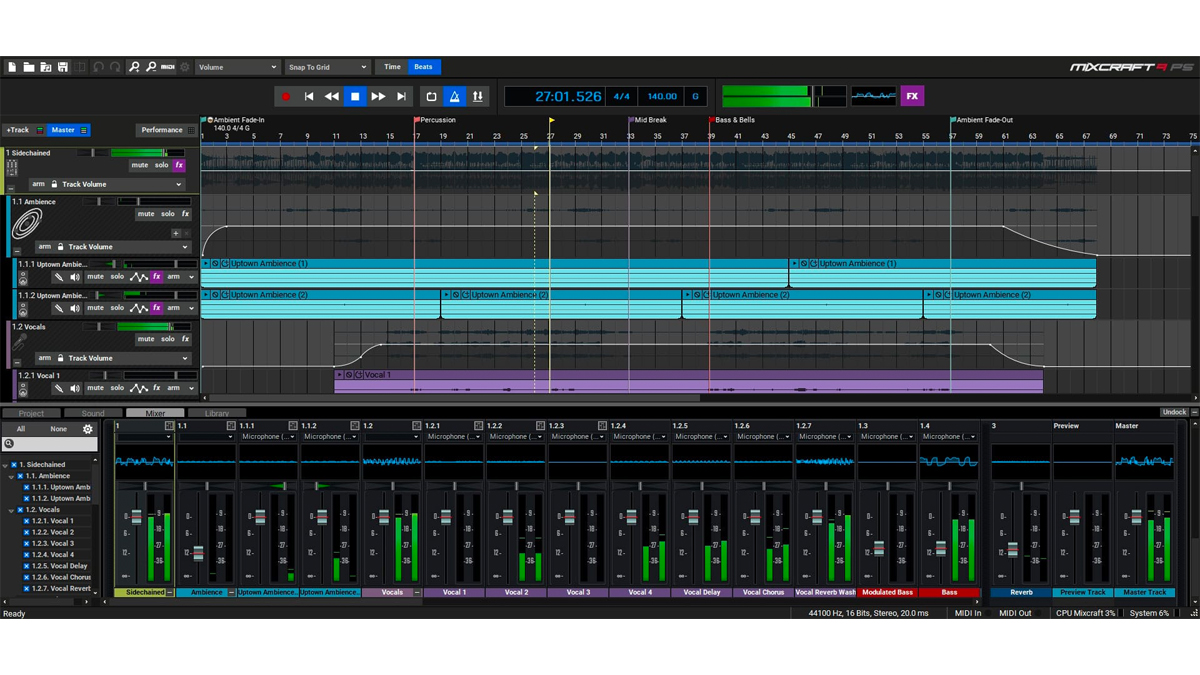
10. Acoustica Mixcraft
A GarageBand rival for Windows users
Launch price: From $99 | Versions: Recording Studio, Pro Studio | Compatibility: PC | System requirements (PC): Windows 7 SP1, 8 or 10 (64 or 32-bit), 1.8 GHz Dual Core CPU (Quad Core or higher recommended), 8GB RAM
![]() Easy to use
Easy to use![]() You won't easily outgrow it
You won't easily outgrow it![]() Decent content library
Decent content library![]() No obvious upgrade path
No obvious upgrade path
When PC users ask us if it’s possible to get a GarageBand-style application for their operating system, we tend to point them in the direction of Mixcraft. Through its eight major updates, Mixcraft has evolved from a basic starter app to a genuinely impressive DAW, taking on features normally associated with costlier alternatives.
Mixcraft 9 has a sleeker interface with detachable panels, as well as new automation features, vocoder tracks, new effects and instruments and the option to convert audio to MIDI with a single click.
It might not be the flashiest DAW on the market, but if you invest in Mixcraft you'll be getting a well-supported production solution that comes at a great price, and beginners will find it very approachable.
Find out more: Acoustica Mixcraft 9
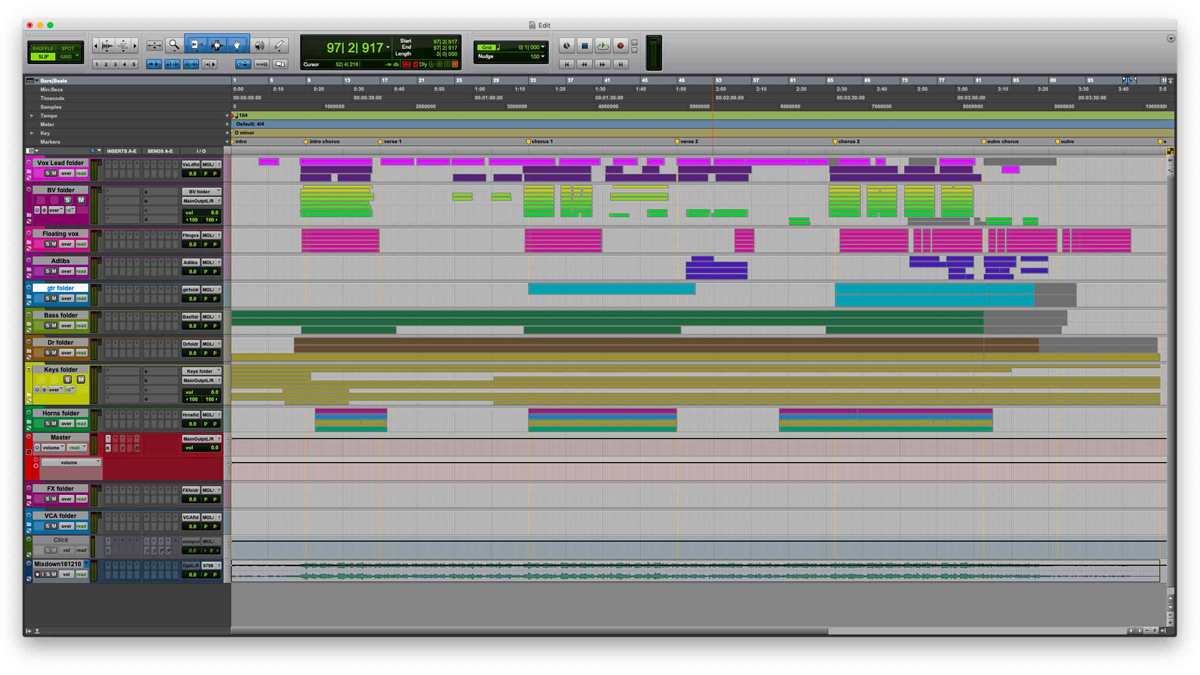
11. Avid Pro Tools
The industry-standard recording and post-production software
Launch price: From $30/£25/€28 a month | Versions: First, standard and Ultimate | Compatibility: PC/Mac | System requirements (PC): Windows 10, Intel Core i5 processor, 16GB RAM (32GB or more recommended), 15GB disk space for installation | System requirements (Mac): macOS 10.13.6 or later, Intel Core i5 processor, 16GB RAM (32GB or more recommended), 15GB disk space for installation
![]() A genuine industry standard
A genuine industry standard![]() You can get started with a free version
You can get started with a free version![]() Now has a more contemporary workflow
Now has a more contemporary workflow![]() Still best-suited to linear recording
Still best-suited to linear recording
It’s hard to know where to start with Pro Tools, which remains an industry standard in recording studios around the world. The software has never had quite the same impact in the home recording market, but knowledge of it certainly puts you at an advantage if you want to work in the industry.
Recent updates have seen Avid improving Pro Tools’ workflow. You can now update tracks and timeline sections during playback, so you can experiment with effects, presets, loop points, etc, without ever stopping the music. As such, your creativity can flourish uninterrupted.
There's also Avid Cloud Collaboration, for cloud-based project storage, while the Avid Marketplace, which is designed to connect you with others in the audio community.
Whether all of this will be enough to significantly grow the Pro Tools user base remains to be seen, but existing fans are unlikely to look anywhere else.
Find more more: Avid Pro Tools 2020
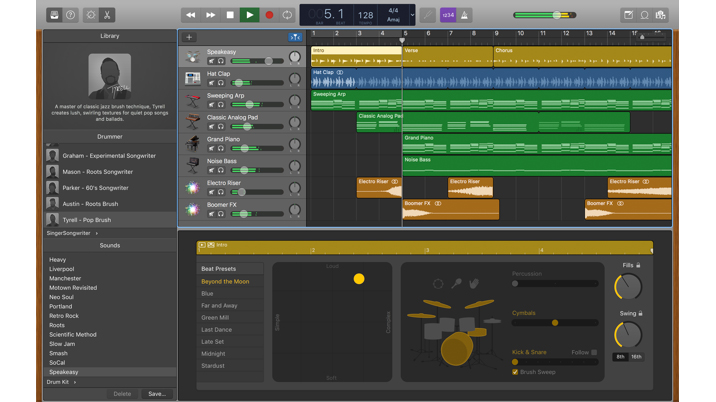
12. Apple GarageBand
The best DAW for beginners
Launch price: Free | Compatibility: PC/Mac | System requirements: macOS 10.13.6 or later
![]() Free with all Macs
Free with all Macs![]() Very easy to use
Very easy to use![]() Ready-made upgrade path
Ready-made upgrade path![]() No PC version
No PC version
More than 15 years after a young-looking John Mayer helped to launch it at Macworld, GarageBand has matured into a pretty capable DAW. Sure, it’s great for beginners but dig a little deeper and you’ll find some rather more advanced features, too.
Non-musicians can simply sequence the supplied audio loops, but a decent collection of software instruments comes supplied, too, as does multitrack recording functionality and a good selection of virtual guitar amps and stompboxes. Drummer is great for automatically generating beats, Smart Controls make for more pleasant editing of sounds, and you can even use the Logic Remote iPad app to control the software.
As a further bonus, projects are compatible with Logic Pro, GarageBand’s big brother, and also with the iOS version of GarageBand, giving you a mobile option. And the fact that it’s free means that every Mac owner should try it.
Find out more: Apple GarageBand for Mac